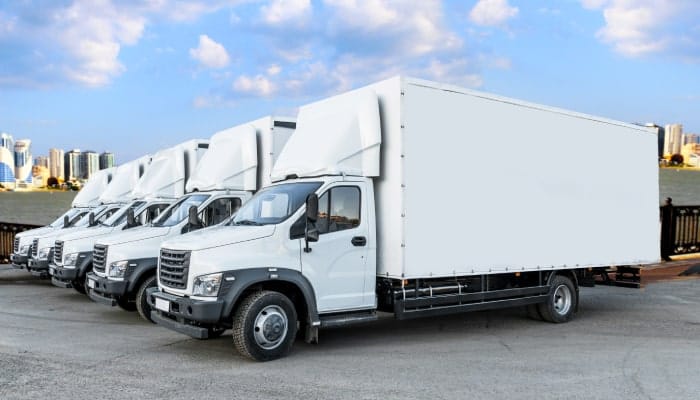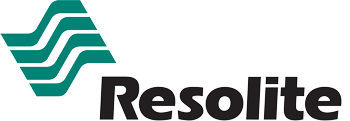Fiber-reinforced polymer (FRP) has become so much more than just a manufacturing material. It represents a revolution in construction and design across various industries. FRP offers you durability, versatility, and cost-efficiency for all of your projects, which is why it is so great for such a wide range of applications. This composite material is comprised of a polymer matrix reinforced with fibers, typically glass, carbon, or aramid, which are selected based on the performance requirements of the final product. Here are some great examples of what FRP is used for.
Commercial Uses
The commercial sector has been turning to FRP more and more for its durable properties and functional versatility. At Stabilit America, we harness these qualities in our Glasliner FRP panels to meet the rigorous demands of commercial environments. Some ways you can integrate FRP panels into your commercial space include:
- Supermarkets and Retail Spaces: FRP panels fit into retail spaces really well due to their resilience and minimal maintenance needs. They stand strong against wear from high foot traffic that is inherent in a space where so many customers move around, and they are impermeable to most spills, which simplifies cleaning and upkeep. FRP is a great choice for a space that requires a clean, attractive appearance with the capability to make it through the rigors of daily operations.
- Restaurants and Food Service Areas: In food service applications, hygiene is a top priority. FRP’s non-porous surface prevents moisture absorption and resists stains from food and beverages, making it the perfect choice for kitchen backsplashes, dining area wall coverings, and food prep stations. It’s easy to clean, making it easier to maintain the hygiene standards that are crucial for health code compliance.
- Hospitality and Entertainment Venues: The visual flexibility and durability of FRP make it a preferred material for venues such as hotels and theaters. It stands up to the constant wear and tear typical of these high-traffic areas while providing a high-quality finish that can be customized to fit any business theme. This balance of performance and style enhances the overall visitor experience and maintains facility standards over time.
Institutional Applications
FRP’s customizable nature and durability play a big role in institutional settings where the requirements for both aesthetics and long-term performance are exceptionally high.
- Educational and Healthcare Facilities: In environments where sanitation and durability are required without fail, such as schools and hospitals, FRP offers a perfect solution. It stays strong even with frequent cleaning and disinfection, so you don’t have to worry about it deteriorating. The hygienic surface stays in place, which is important when it comes to controlling infections.
- Government and Historical Buildings: For government and historical buildings, FRP provides a practical yet visually appealing solution. It supports the architectural integrity of significant structures while offering a cost-efficient alternative to more expensive materials. FRP’s ability to mimic other textures and finishes means it can seamlessly integrate into historical renovations or new builds requiring specific touches.
Architectural Flexibility
FRP is a game-changer in the architectural world, offering unmatched flexibility and resilience in building design. Stabilit’s advanced architectural panels, including options like walkable roofing panels, provide creative freedom for architects looking to push the boundaries of traditional construction materials.
- Sports and Recreational Facilities: Leveraging FRP in sports arenas and aquatic centers offers some serious benefits. The material’s inherent resistance to chlorine and UV degradation makes it perfect for locations like outdoor pools and covered sports complexes. These unique features help with long-term durability and reduced maintenance costs.
- Transportation Infrastructure: FRP excels in constructing bridges and overpasses. Its resistance to corrosion and fatigue is vital in these structures. By integrating FRP, transportation infrastructures can withstand environmental stresses longer than traditional materials, thereby extending their operational lifespan.
High-Performance Industrial Settings
In sectors where environmental conditions are the most punishing, FRP stands out for its strength against corrosive elements, showcasing its superiority in industrial settings prone to intense chemical exposure and extreme weather conditions.
- Chemical Plants and Refineries: In industrial buildings where chemical spills and exposures are a routine challenge, FRP provides an essential barrier. Its chemical inertness prevents material degradation, which enhances plant safety and prevents costly downtime and repairs that are all too typical with less resistant materials.
- Water and Wastewater Treatment Facilities: FRP is great in these facilities because of its ability to endure damp and corrosive settings without succumbing to rust or decay. This makes FRP the perfect fit for water treatment applications, ensuring that structures remain intact and functional over extended periods despite constant exposure to harsh operational conditions.
Residential and Agricultural Implementations
In the residential and agricultural sectors, FRP’s durability and maintenance ease make it a preferred choice for both home exteriors and agricultural constructions, where longevity and low upkeep are crucial.
- Home Exteriors and Gardens: FRP’s adaptability and strength find use in residential settings, particularly in outdoor structures like patios and garden sheds. Its weather resistance protects against the elements, ensuring that these installations remain maintenance-free while retaining their aesthetic appeal over time.
- Agricultural Facilities: Stabilit’s Opalit panels are specifically formulated to withstand aggressive environments in agricultural settings. Resistant to ammonia and other corrosive substances commonly found in poultry and livestock farming, these panels provide durable, long-lasting solutions that safeguard the structural integrity of agricultural buildings against environmental and chemical wear.
Transportation Advancements
In the transportation industry, FRP is pivotal for manufacturing components that are both lightweight and durable, which is critical for improving fuel efficiency and longevity of vehicles. From translucent fiberglass panels for roofs to flooring, FRP is integral in the construction of buses, trains, and other vehicles, providing a balance of weight and strength that metal often cannot match.

Explore the Versatility of FRP with Stabilit America: What FRP is Used For
When considering what FRP is used for, you can see the wide-ranging applications unique to the material in modern manufacturing and construction. At Stabilit America, we harness the power of FRP panels to push the boundaries of what is possible across industries, crafting solutions that integrate seamlessly into modern infrastructure. By choosing FRP panels, you’re investing in sustainability, efficiency, and innovation.


